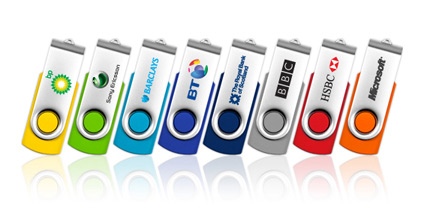Understand Them And Take Care of Your USB Flash Drives
USB Flash drives are incredibly popular and consequently we’re all using them more and more to store and carry our personal and work data and files around with us. But, just like any data that is stored digitally data saved onto a flash drives is susceptible to corruption and if this happens you could potentially lose your files or incur hefty fees to data recovery specialist to try and recover your files.
If you use USB flash drives then there are a few things you can do to reduce the risk of data corruption and loss and this starts with understanding exactly what a USB flash drive is and how it works. Once you have a grasp of the basics its then much easier to understand the “do’s and don’ts” of how you use them which in turn will hopefully reduce any failures.
What is flash memory
Flash memory is probably the most commonly used digital storage in use in the world today. Flash is “solid state” memory with no moving parts and data is written to it and erased from it electronically over and over again. If you own a mobile phone, digital camera, MP3, iPod, or USB flash drive then you’ll have a product, which uses flash memory, but as you might expect there are differences in terms of quality and performance between the different types of flash memory flash available in the market.
The different types of flash memory typically used are:
Single Layer Cell Flash Modules (SLC) – This is the most expensive of all the flash modules you can buy because it uses less power (which in turn gives better battery life), it has excellent read/write speeds and because the data is written into a single cell (one bit of data is stored in a single cell) it is less susceptible to corruption. The vast majority of branded USB flash drives supplied by USB2U use SLC flash modules.
Multi Layer Cell Flash Modules (MLC) – As the name implies these flash modules store two bits of data per cell and hence can store twice the amount of information but with this improved data storage comes slight higher power consumption and a lower expected life. Because it’s cheaper than SLC flash modules MLC is commonly found in everyday consumer products.
Triple Layer Cell Flash Modules (TLC) – TLC flash modules are the cheapest type of flash available today. They allow you to write three bits of data to each data cells but the trade off is slower read/write speeds and a much lower life expectancy coupled with a greater propensity to fail. As such TLC flash modules tend to be used in “low end” consumer products where data storage is not “critical”.
Understanding how flash memory works:
Flash memory is a solid state “chip” that has no moving parts – it looks like a small printed circuit board encased in rubber so its not particularly exciting to look at but more importantly it is small, quiet, uses little power and generates hardly any heat. Data is “written” to the flash electronically as a series of “bits” and is erased in the same way.
Typical reasons for data corruption:
Life expectancy reached – Flash modules have a life expectancy and when reached they can lose their ability to retain data. Typically this is several thousand read/write cycles but the life expectancy will vary depending on the quality of chip used.
Condensation – If the products the flash modules are used are subjected to extremes of temperatures or humidity this can cause the flash module to short circuit or for corrosion of the contacts to build up.
Premature Removal – the most common reason for data loss when using a USB flash drive is removing the USB flash drive whilst it is still in use and without going through the “stop” and “safely remove” process. Doing this typically won’t damage your flash drive it will commonly lead to the loss of some/all of the data.
If you use USB flash drives to store critical data on then its worth ensuring you buy flash drives that use top grade flash chips (SLC chips) and you should make sure when you use the flash drive that you “stop” the drive using the “safely remove hardware” option before you physically remove it from the PC. Also bear in mind that flash memory degrades over time and has a life expectancy which when reached will mean permanent failure. So, if you’ve got a USB flash drive that’s been used regularly over a number of years its probably not a good idea to rely on it for the storage of critical data or precious photo’s!


